A selection of fresh books on Python for those who are just going to study it

There is always a lot of reasons to release a book about IT and programming. Bitcoin's course took off - a dozen blockbusters about blockchain technology and mining appear on the market. The machine on Go beat a person into some kind of intellectual game — get a stack of “the most complete guides” in the Google language.
But there are themes forever. One of them is Python. It is understandable, the language is perfect for those who are not familiar with programming at all; You can study all the main libraries in a couple of weeks, and the possibilities are practically unlimited. Ilya Bubnov, the author of the GeekBrains blog, looked at the Amazon online store shelves to see what was released or re-released via Python in the first half of 2018.
Computer Programming for Beginners: Fundamentals of Programming Terms and Concepts, Nathan Clark
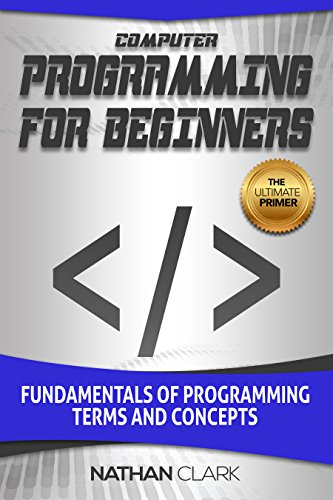
Before we go directly to the language, let me recommend this book. From what has come out in recent years, perhaps, this is the most complete and readable introduction to programming.
It is perfect for those who do not understand anything in programming. A total of two hundred pages is very succinct, but at the same time it is clearly described:
- All basic programming terms with definitions.
- What are states, operators, functions, scopes and uses.
- What programs look like in different languages: structure, build and debugging.
- What is OOP, how it differs from functional programming, and when to use it.
- How to work with memory: recording, management, cleaning, handling.
All this is accompanied by examples in C #, Python and Java, so you will not only learn about programming in theory, but also begin to delve into it in practice.
Python Programming: For the Beginners, Navi Feroz
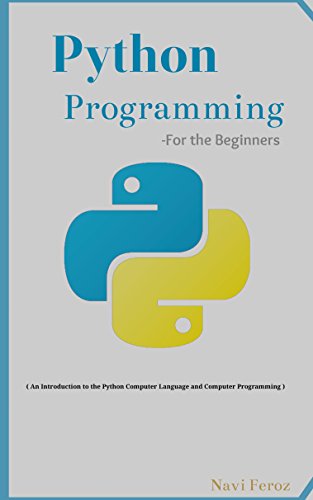
Judging only by the reviews, this is one of the best books for beginners. Here, without deepening into the mechanics of processes (this can be found in the previous book), the basic knowledge of programming as a whole is given, and only then by the Python syntax, program structure, main libraries and capabilities. Everything is written in simple language, so you can read it even in front of the computer, even while lying on the beach on vacation.
Of course, at the exit you will not feel yourself as a ready-made specialist, but you definitely will be eager to continue studying in this direction. In addition, the book is replete with basic examples, so in future practice, you will often return to re-examine individual chapters.
Python Programming: A Step By Step Guide For Beginners, Brian Jenkins
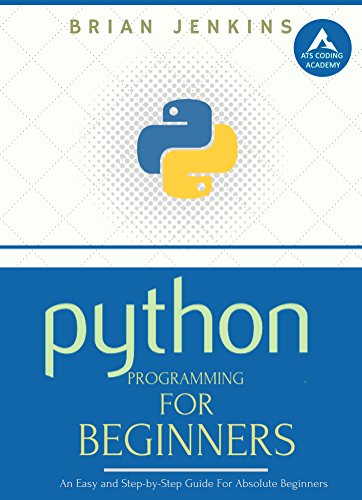
This book is more suitable for those who do not want to delve into the wilds of the theory, but to comprehend a new language, strictly following the steps from installation to writing the first serious program in Python 3. Of course, this is not a book that can be studied away from the computer.
The material is extremely chewed and accompanied by a bunch of examples, so you will not have white spots after reading, everything will be learned even at the level of mechanical memory. In general, this is a good guide for educational program, if you have only a few days off.
Python: - The Bible- 3 Manuscripts in 1 book: -Python Programming For Beginners -Python Programming For Intermediates -Python Programming for Advanced, Maurice J. Thompson
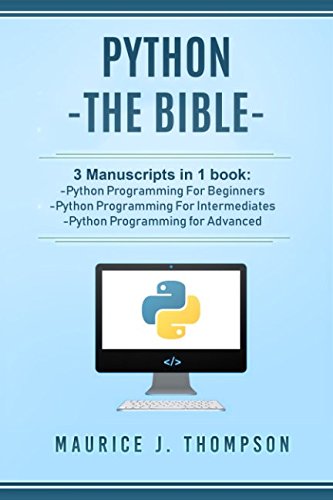
A collection of three books that will appeal to those who are confident that its future will be linked to Python. Each part is designed for a certain level of training. The stated duration of training for this manual is 21 days. However, one should not think that this time is enough to become a ready-made specialist.
The first part deals with basic questions:
- What is Python? What are its advantages over other languages?
- How to get started?
- What are variables, strings, lists, dictionaries, etc.?
- What does a Python program look like? Why is it important to follow certain rules of style?
- How to create a first project?
The second and third parts reveal deeper questions, for example:
- How is memory management organized in Python?
- What does OOP look like in Python?
- How to debug and test programs?
- What are iterators and generators? How to use them?
This is just a small list of topics to be addressed - in the "Bible" there are answers to all questions on language, but exactly in the volume that can fit in just three books.
Python Programming: The Basic, Blackhat, Intermediary and Advanced Guide to Python Programming, Richard Ozer
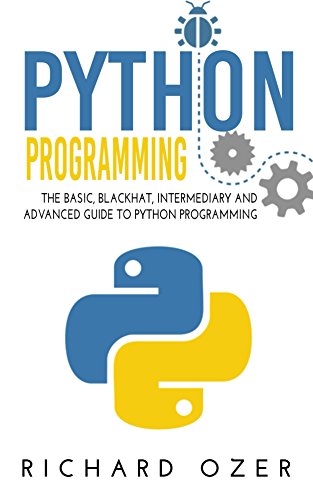
Similar to the previous collection, but consisting of four parts. Here, a little more information, a little more examples, in the "advanced" parts of a little more emphasis on the mechanisms of Python. In general, this is the same comprehensive guide to the language, which is useful to keep on hand for many years of work in programming.
Python Machine Learning: A Guide For Beginners, Leonard Eddison
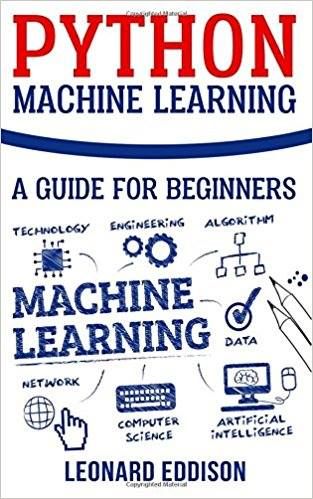
From general books on the language, let's move on to a guide for beginners who are interested not only in Python, but in its application in the field of artificial intelligence. Although the title says that the book is for beginners, it is better to get acquainted with the language in advance, because the main emphasis here will be placed not so much on it as on working with data.
The main goal of the author is to show how the Data Science world works, how information is structured, processed and put into algorithms that are later used by artificial intelligence. That is, this is not a classic walkthrough, so the book will be interesting even to those who study other languages, or do not program at all.
Python Programming: “Learn By Doing” Approach-Step-By-Step Guide to Mastering Python: The William Sullivan
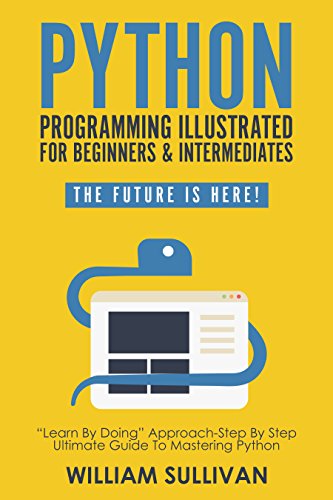
Another step-by-step tutorial with working code examples. The principal difference from most other books is the amount of information. This means that you will not have to run to the store for the next book immediately after creating the first program. With this guide, you can practice functional programming, learn how to build informative diagrams, and master the professional style of writing code. And all this thanks to a huge number of examples, with detailed description of the processes.
Coding: Raspberry Pi & Python: A Guide For Beginners, Leonard Eddison
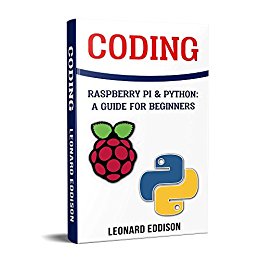
Another very high-quality book from Addison, consisting of two parts. The first is devoted to educational program in Python - it is quite possible to use it in conjunction with the above book “Python Machine Learning ...”. The second part is the cognition of the capabilities of one of the most popular geek platforms using Python. In general, this is a very convenient desktop guide for those who decide to create their own robot or make their own home a little smarter.
There are no direct examples from the category “how to assemble a machine for watering plants”, but if you understand little in programming, the book will be very useful.
Coding: The Bible: 2 Manuscripts - Python and Raspberry PI, Larry Lutz

A collection of two books similar in structure, but a little larger. Here not only issues related directly to the language are considered in detail, but also such important points as code optimization, reliability and modularity. After reading the question with Python you can actually close it - everything else will lie in the field of engineering thought and the desire to independently find the answers.
The second part introduces the Raspberry Pi platform. You will learn how to install an operating system on a device and start working with it using Python. Unlike the previous book, there are practical examples here, but still not in the quantity that you do not have to strain your brain.
Machine Learning: Step-by-Step Guide To Implementing Machine Learning Algorithms with Python, Rudolph Russell

We conclude our review with another book on a relevant topic - machine learning. Unlike Addison's book, here it is initially assumed that you have knowledge and experience with Python. The book will appeal to all those who are close to the topic of artificial intelligence and big data, but because of the abundance of examples using libraries such as pandas, matplotlib and sklearn, it is of particular value to pythonists. There are a huge number of illustrations and code examples (as far as possible in a 100-page book), as well as explanations, through which the author explains the basic data processing algorithms. In general, this is one of the best books on MO in Python.
And what fresh book on this language would you recommend?
